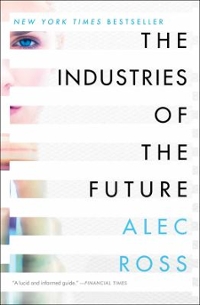Question
When firms can perfectly price-discriminate, both _____ and marginal revenue are higher. profits total cost marginal cost total revenue In perfect price discrimination, marginal revenue
When firms can perfectly price-discriminate, both _____ and marginal revenue are higher.
- profits
- total cost
- marginal cost
- total revenue
In perfect price discrimination, marginal revenue equals:
- average total cost.
- total cost.
- price.
- total revenue.
When advertising occurs in a perfectly competitive market, it is generally promoting the:
- individual firm.
- industry as a whole.
- firms that are subsidized by the government.
- firm's owner.
A firm's products may become less price elastic as advertising:
- decreases costs.
- increases supply.
- increases brand loyalty.
- decreases price
When firms can perfectly price discriminate, both total revenue and _____ are higher.
- marginal revenue
- profits
- marginal cost
- total cost
Unlike a monopoly, firms in monopolistic competition are faced with:
- high barriers to entry.
- intense competition.
- standardized products.
- inelastic price elasticity of demand.
Unlike firms that are in perfect competition, firms in monopolistic competition have:
- differentiated products.
- no price-setting ability.
- intense competition.
- high barriers to entry.
Demand is less price elastic in monopolistic competition than in perfect competition due to:
- high entry barriers.
- product standardization.
- long-run economic profits.
- product differentiation.
_____ is the real or perceived distinction between products that are close substitutes.
- Product differentiation
- Customer consideration
- Customer preference
- Product attraction
At a price of $18, the marginal revenue of a monopolistically competitive firm is $12. If the marginal cost of production is $10, what should the monopolist do?
(hint:what needs to happen to Q, and what change in P will cause it)
- Increase its price.
- Keep its price at the same level.
- Decrease its price.
- not enough information to solve
If short-run economic profits are greater than zero for firms in a monopolistically competitive market, in the long run we expect:
- competing firms to enter the market and sell similar products.
- the demand curve for firms in the market to shift to the right.
- entry barriers to prevent competing firms from entering this market.
- profits to increase.
The term "rent seeking" best describes a situation in which:
- individuals expend effort searching for a good price on an apartment.
- firms use resources to secure or preserve a monopoly in providing a good or service.
- consumers compete for a limited quantity of the good.
- None of the above are good descriptions of rent-seeking behavior.
An example of a _____ monopoly occurs when governments impose licensing requirements on taxis.
- low
- natural
- consumer
- legal
_____ regulations result in zero economic profit for a regulated natural monopoly.
- Marginal cost pricing
- Average cost pricing
- Antitrust
- Total cost pricing
A _____ monopoly occurs when a firm or government has control over the supply of a natural resource.
- utility
- natural
- natural resource
- network
Step by Step Solution
There are 3 Steps involved in it
Step: 1

Get Instant Access to Expert-Tailored Solutions
See step-by-step solutions with expert insights and AI powered tools for academic success
Step: 2

Step: 3

Ace Your Homework with AI
Get the answers you need in no time with our AI-driven, step-by-step assistance
Get Started


